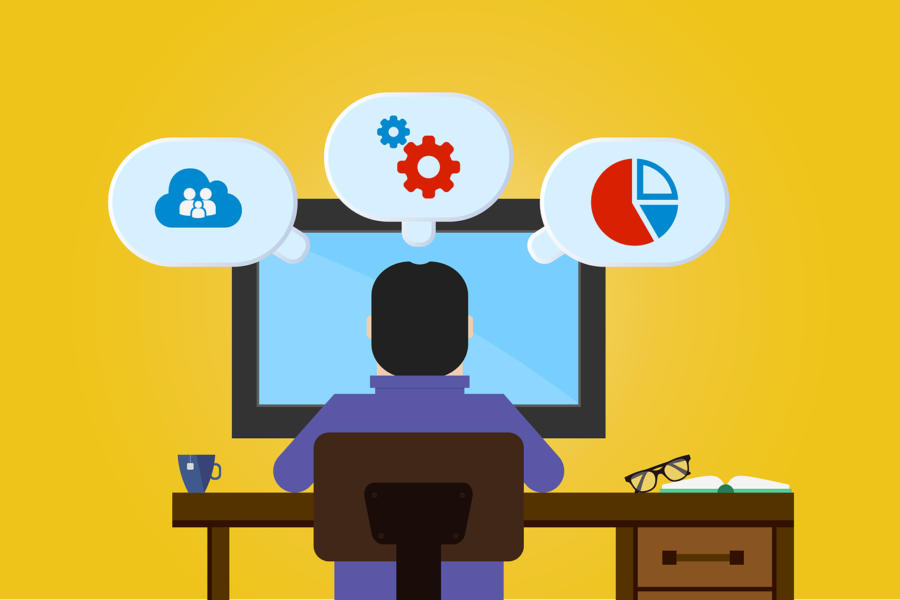Tools that your business uses need to be chosen with great care and attention to detail. This goes for software as much as for any other tool or service. The business software market is huge and often overwhelming to new business owners looking for ways to save while providing their employees with the software solution they need.
Luckily, knowing what you need the tool for helps a great deal when it comes to making a choice. Practicing common sense and sticking closely to set up budgets, as you would with any other purchase is also good advice.
How is the Software Used?
The first thing to ask yourself is: do you need a tool for a specific job or do you want a broad system of tools that will cover a lot of different tasks at once. Both of those options have their upsides and downsides not only when it comes to how much it’s going to cost.
Having a lot of different tools that your employees need to switch between can end up affecting productivity and creating gaps in the workflow. It’s also costly and it takes a lot of time to train an employee to use too broad a tool.
How Much the Software Solution Costs?
Taking into account the budget is an essential part of choosing the tools you’re going to use. This isn’t only about the end price but also how the tool is paid for. There are software solutions that you can subscribe to, but can’t own and that’s an issue for some businesses.
There are often different tiers of service offered by the software and you should also consider how many of the features available you’ll actually need.
Pay Attention to The Reviews
There are sites out there that can be helpful when it comes to aggregating and sorting through reviews. Sites such as Truely can help compare and contrast different software solutions and narrow down the choice to a few, which you can then test in practice.
The reviews are balanced and often focus on the user’s experience as the most important basis for ranking a piece of software. This is especially important when making a choice on which to purchase since you’re looking for a tool that’s made to complete a particular task and that your employees can easily adapt to.
A Learning Curve
There’s often a learning curve to using a piece of software. It takes time until you figure out all the features and even more until you’re able to create an easy and comfortable workflow with the tool. Sometimes, it’s also useful to have someone to supervise you in the process.
This is something to consider if you’re buying a piece of software for professional use. It may limit you in terms of who you can hire or it may require an additional expense that will cover training and supervision.
Is Customer Support Available?
Chances are that something will go wrong with a piece of software and if a business depends on it, such issues can be a big deal. It’s therefore essential that the software has a customer support and that it can address those problems as soon as they arise.
Customer support needs to be reachable via a variety of channels. They also need to be staffed by experts that will know how to fix the problem and guide the user through the process if there’s a need for it. It’s also essential that they are available at all times.
Room For Growth
A business will grow and expand over time and it will require more staff and more tools in the process. This is something you need to keep in mind when choosing software since you want to prepare for the business you’re going to have and not just work on the business you have now.
That can also be accomplished by getting different tiers of a single piece of software or by getting a solution that’s more complex than what you need at the moment and growing into the tool with all of its features.
Consult The Employees That Are Going to Use It
It’s important to take into account the opinion of those who will actually use the software on a day-to-day basis. This is too often overlooked and it can create a problem in the workflow if it’s not addressed before you actually purchase a piece of software.
It’s best to do this during a trial phase when you’re testing out a few software options at once and choosing the one that you plan to stick with for a while at least. This is much easier with new businesses that are building their workflow from the ground up.
Think About the Ecosystem
If you’re already using an ecosystem of software solutions and if it’s based on an operating system, you’ll need to think about how a new piece of software can interact with it. When these decisions are all set, your options become somewhat limited.
A good piece of software that can be used for the task you’ve planned to use it for, will become worthless if it won’t work on the operating system your business runs on. That can be challenging but settling for a lesser option is better than changing the whole setup.
It’s OK to Change Your Mind
Choosing a piece of software is an important call to make and it affects your business in the long run. Therefore, there’s nothing wrong with changing your mind and switching between two different options. That’s why trial periods are so important and it helps to have a few options on your shortlist as well.
Don’t think about this as a waste of time, since it can end up saving time, you might otherwise lose by choosing a software that doesn’t suit your needs and that your employees aren’t satisfied with. It’s best to make the change before you’ve entered into any long-term subscriptions or contracts.

Ingrid Maldine is a business writer, editor and management consultant with extensive experience writing and consulting for both start-ups and long established companies. She has ten years management and leadership experience gained at BSkyB in London and Viva Travel Guides in Quito, Ecuador, giving her a depth of insight into innovation in international business. With an MBA from the University of Hull and many years of experience running her own business consultancy, Ingrid’s background allows her to connect with a diverse range of clients, including cutting edge technology and web-based start-ups but also multinationals in need of assistance. Ingrid has played a defining role in shaping organizational strategy for a wide range of different organizations, including for-profit, NGOs and charities. Ingrid has also served on the Board of Directors for the South American Explorers Club in Quito, Ecuador.








































